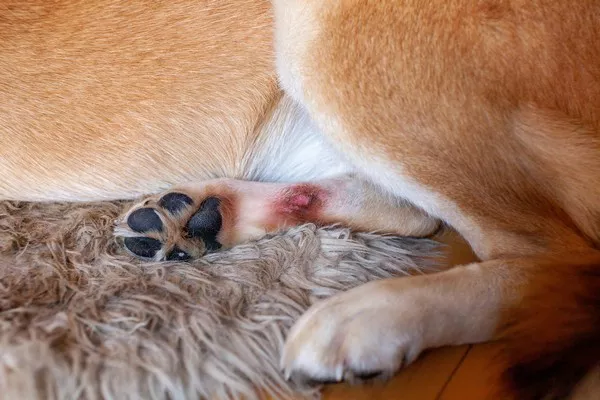Dermographism urticaria, also known as dermographic urticaria or dermatographia, is a type of physical urticaria characterized by the skin’s exaggerated reaction to minor physical stimuli. The term “dermographism” comes from the Greek words for “skin writing,” aptly describing how the skin, when subjected to pressure or scratching, develops raised, red lines or wheals that mimic writing or drawing.
Dermographism urticaria affects approximately 2-5% of the population and is considered one of the most common forms of physical urticaria. This condition can range from mild to severe, with symptoms varying significantly among individuals. Although it is generally not life-threatening, dermographism can significantly impact the quality of life due to its chronic and often unpredictable nature.
Causes and Pathophysiology of Dermographism Urticaria
The exact cause of dermographism urticaria remains unclear, but it is believed to result from a combination of genetic, immunological, and environmental factors. The condition is primarily characterized by the rapid degranulation of mast cells in the skin, which releases histamine and other inflammatory mediators. This process leads to the dilation of blood vessels, increased vascular permeability, and subsequent fluid leakage into the surrounding tissues, causing the characteristic wheals and redness.
Several factors may contribute to the development and exacerbation of dermographism urticaria, including:
1. Genetic Predisposition: A family history of urticaria or other allergic conditions may increase the likelihood of developing dermographism.
2. Immune System Dysfunction: Abnormal immune responses or dysregulation of mast cells can trigger excessive histamine release in response to minor physical stimuli.
3. Environmental Triggers: Physical factors such as pressure, friction, temperature changes, and even emotional stress can provoke symptoms. Certain medications and infections might also act as triggers.
4. Skin Sensitivity: Individuals with naturally sensitive or reactive skin may be more prone to developing dermographism.
SEE ALSO: What Causes Chronic Hives and Angioedema
Clinical Presentation and Symptoms
Dermographism urticaria typically presents with the rapid onset of raised, erythematous wheals or lines on the skin following minimal physical stimuli such as scratching, pressure, or friction. These wheals often appear within minutes of the skin being stroked or rubbed and can persist for 30 minutes to several hours before resolving spontaneously. Common symptoms associated with dermographism include:
1. Pruritus (Itching): Intense itching is a hallmark symptom and can be exacerbated by scratching, leading to a vicious cycle of itching and scratching.
2. Erythema (Redness): The affected areas of the skin become red and inflamed due to increased blood flow and capillary dilation.
3. Wheals (Hives): Raised, swollen areas of skin resembling hives or welts appear in response to physical stimuli.
4. Burning or Stinging Sensation: Some individuals may experience a burning or stinging sensation in the affected areas.
In severe cases, dermographism can be associated with systemic symptoms such as headache, fatigue, and generalized malaise, though these are less common.
Diagnosis of Dermographism Urticaria
The diagnosis of dermographism urticaria is primarily clinical, based on the characteristic appearance of wheals and erythema following minor physical stimuli. A thorough patient history and physical examination are essential to rule out other forms of urticaria and skin conditions that may present with similar symptoms.
1. Patient History: A detailed history should include information about the onset, duration, and frequency of symptoms, as well as any identifiable triggers or exacerbating factors. It is also important to inquire about a family history of urticaria or other allergic conditions.
2. Physical Examination: The physical examination involves lightly stroking or scratching the skin with a blunt object, such as a tongue depressor, to observe the development of wheals and erythema. This test, known as the “dermographism test,” is simple, non-invasive, and typically yields immediate results.
3. Laboratory Tests: In most cases, laboratory tests are not necessary for the diagnosis of dermographism urticaria. However, if there is suspicion of an underlying condition or if symptoms are atypical, blood tests, allergy tests, or skin biopsies may be performed to rule out other causes.
SEE ALSO: Is Physical Urticaria Dangerous?
Management and Treatment
While dermographism urticaria can be a chronic and bothersome condition, it is generally manageable with appropriate treatment and lifestyle modifications. The primary goals of treatment are to alleviate symptoms, reduce the frequency and severity of flare-ups, and improve the patient’s quality of life.
1. Avoidance of Triggers: Identifying and avoiding known triggers can help minimize symptoms. Patients should avoid excessive scratching, tight clothing, and activities that involve significant friction or pressure on the skin. Stress management techniques, such as relaxation exercises and mindfulness, can also be beneficial.
2. Antihistamines: Antihistamines are the mainstay of treatment for dermographism urticaria. Non-sedating antihistamines, such as cetirizine, loratadine, and fexofenadine, are commonly prescribed to relieve itching and prevent wheal formation. In more severe cases, higher doses or a combination of antihistamines may be required.
3. Topical Treatments: Topical corticosteroids or other anti-inflammatory creams can provide temporary relief from itching and inflammation. However, long-term use of topical corticosteroids should be avoided due to potential side effects.
4. Systemic Medications: In refractory cases, where symptoms do not respond to standard treatments, systemic medications such as corticosteroids, leukotriene receptor antagonists, or immunosuppressants may be considered under the supervision of a specialist.
5. Phototherapy: Phototherapy, using ultraviolet (UV) light, has shown some efficacy in treating chronic urticaria, including dermographism. This treatment option should be administered by a healthcare professional with experience in managing phototherapy.
6. Lifestyle Modifications: Maintaining good skin hygiene, using gentle skincare products, and moisturizing regularly can help reduce skin sensitivity and prevent flare-ups. Wearing loose-fitting, breathable clothing made from natural fibers can also minimize irritation.
Prognosis and Long-Term Outlook
The prognosis for dermographism urticaria varies among individuals. For many, the condition may be chronic but manageable with appropriate treatment and lifestyle adjustments. In some cases, symptoms may spontaneously resolve over time, while others may experience intermittent flare-ups throughout their lives.
Although dermographism urticaria is generally not associated with serious complications, the chronic nature of the condition and the associated itching and discomfort can significantly impact the patient’s quality of life. It is important for patients to work closely with their healthcare providers to develop a personalized management plan that addresses their specific symptoms and needs.
Conclusion
Dermographism urticaria is a common yet often misunderstood condition characterized by the skin’s exaggerated reaction to minor physical stimuli. While the exact cause remains unclear, the condition is believed to result from a combination of genetic, immunological, and environmental factors. Symptoms typically include itching, redness, and the rapid onset of raised wheals following physical stimuli.
Diagnosis is primarily clinical, based on patient history and physical examination. Management focuses on symptom relief and the avoidance of known triggers, with antihistamines being the cornerstone of treatment. In more severe cases, additional medications or therapies may be necessary.
Despite its chronic nature, dermographism urticaria is generally manageable with appropriate treatment and lifestyle modifications. By understanding the condition and working closely with healthcare providers, patients can achieve significant symptom relief and maintain a good quality of life.
Related Topics:


























